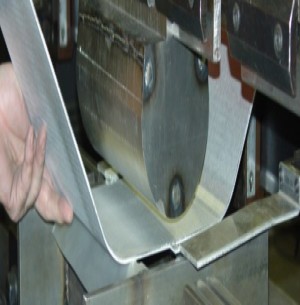
All about the Sheet Metal Fabrication Process?

27 Dec, 2021
What is sheet metal fabrication?
Sheet metal fabrication is a tradition of manufacturing procedures for revolving sheet metal into functional parts. This work is divided into three categories: cutting, deformation, and assembly.
Common sheet metals comprise steel, stainless steel, aluminium, zinc, and copper, and these materials generally come in measures between 0.006 and 0.25 inches (0.015 and 0.635 centimetres) thick. Thinner gauges are extra soft, while thicker ones may be more appropriate for heavy-duty parts with energetic applications.
The method is also fast and produces minimal material wastage. Sheet Metal Fabrication Services is extensively used for industrial and consumer parts and in expert industries like automotive, aerospace, energy, and robotics.
What is the Precision Sheet Metal Fabrication?
Precision sheet metal fabrication is one of the utmost important types of recent industrial engineering. PMI’s team of proficient craftsmen are skilled in an extensive array of sheet metal fabricating processes.
What are all services involved in the Sheet Metal Fabrication Services?
Automated Laser Cutting
Automated Brake Forming
Press Brake Forming
Punching
Turret Press Fabrication
Automated Robotic Welding
Machining Centres
Tooling and Finishing Services
Below are the steps of doing the sheet metal fabrication work
Sheet metal fabrication: Cutting
One of the three key ways to operate sheet metal is to cut it. In this sense, sheet metal fabrication can be measured as a subtractive manufacturing process (like CNC machining), because functioning parts can be made by simply eliminating sections of material.
Manufacturers can cut sheet metal using the variability of various pieces of machinery, some of which are exclusive to sheet metal fabrication.
One of the vital means for cutting sheet metal cutting is laser cutting. A laser cutter uses a powerful laser supported with a lens or mirror. It is an exact and energy-efficient machine suitable for thin or medium gauges of sheet metal but may struggle to enter the hardest materials.
laser cutting picture Alternative sheet metal cutting procedure is water jet cutting. Water jet cutting is a sheet metal fabrication technique that uses a high-pressure jet of water (mixed with an abrasive substance) to cut over the metal. Water jet cutters are mainly useful for cutting sheet metals with a low melting point since they do not produce heat which could unduly deform the metal.
A third sheet metal cutting alternate is plasma cutting. Though less exact than laser or water jet cutters, plasma cutters are fast and influential with low setup costs.
The procedure of punching (sometimes called piercing), for instance, creates precise holes in sheet metal using a punch and die. The sheet metal is located between the two components, and the punch forces itself over the metal to reach the die. In the punching method, the punched circular pieces of detached material are turned into scrap, but these circular pieces can also be used as new workpieces: this is called blanking.
When making many holes, alike equipment can be used for the perforation of the sheet metal.
Sheet metal fabrication: Deformation
An alternative major sort of sheet metal fabrication procedure is sheet metal deformation. This group of processes comprises myriad ways to alteration and manipulate sheet metal without cutting into it.
One of the key deformation procedures is sheet metal bending. Utilizing a machine known as a brake, metal can be bent by the metal sheet company as V shapes, U shapes, and channels to an angle of up to 120 degrees. Thinner gauges of sheet metal are simpler to bend. It is also probable to do the contradictory: sheet metal manufacturers can eliminate the horizontal bend from strip-shaped pieces of sheet metal with the process of decambering.
The process of stamping is added deformation process, but it can also be assumed of as a subgroup of its own. It comprises the use of a hydraulic or mechanical inscribing press equipped with a tool and die, and its operation is similar to punching — through the material does not essentially have to be removed.
Spinning is a sheet metal fabrication procedure unlike other deformation techniques in that its usages a lathe to rotate sheet metal as it is pushed against a tool. The process looks like CNC turning or even pottery spinning, and it is beneficial for making rounded sheet metal parts: cones, cylinders, etc.
